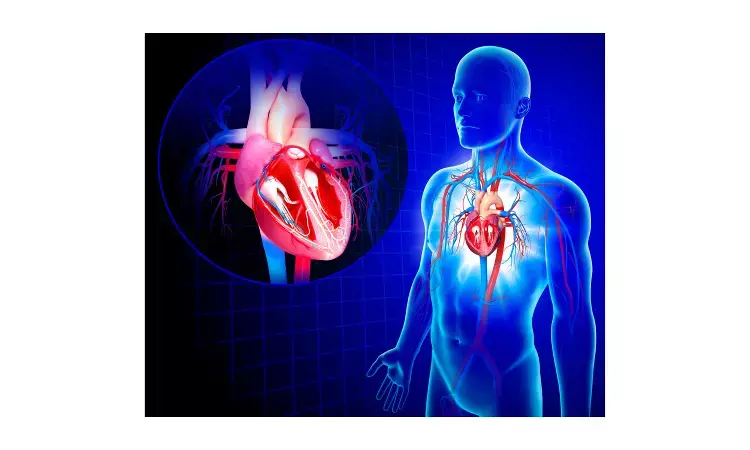- Home
- Medical news & Guidelines
- Anesthesiology
- Cardiology and CTVS
- Critical Care
- Dentistry
- Dermatology
- Diabetes and Endocrinology
- ENT
- Gastroenterology
- Medicine
- Nephrology
- Neurology
- Obstretics-Gynaecology
- Oncology
- Ophthalmology
- Orthopaedics
- Pediatrics-Neonatology
- Psychiatry
- Pulmonology
- Radiology
- Surgery
- Urology
- Laboratory Medicine
- Diet
- Nursing
- Paramedical
- Physiotherapy
- Health news
- Fact Check
- Bone Health Fact Check
- Brain Health Fact Check
- Cancer Related Fact Check
- Child Care Fact Check
- Dental and oral health fact check
- Diabetes and metabolic health fact check
- Diet and Nutrition Fact Check
- Eye and ENT Care Fact Check
- Fitness fact check
- Gut health fact check
- Heart health fact check
- Kidney health fact check
- Medical education fact check
- Men's health fact check
- Respiratory fact check
- Skin and hair care fact check
- Vaccine and Immunization fact check
- Women's health fact check
- AYUSH
- State News
- Andaman and Nicobar Islands
- Andhra Pradesh
- Arunachal Pradesh
- Assam
- Bihar
- Chandigarh
- Chattisgarh
- Dadra and Nagar Haveli
- Daman and Diu
- Delhi
- Goa
- Gujarat
- Haryana
- Himachal Pradesh
- Jammu & Kashmir
- Jharkhand
- Karnataka
- Kerala
- Ladakh
- Lakshadweep
- Madhya Pradesh
- Maharashtra
- Manipur
- Meghalaya
- Mizoram
- Nagaland
- Odisha
- Puducherry
- Punjab
- Rajasthan
- Sikkim
- Tamil Nadu
- Telangana
- Tripura
- Uttar Pradesh
- Uttrakhand
- West Bengal
- Medical Education
- Industry
Management of Aortic Stenosis: 2021 ESC/EACTS Guidelines

Aortic stenosis is the most common and serious valve disease problem. Aortic stenosis is a narrowing of the aortic valve opening. Although some people have aortic stenosis because of a congenital heart defect of bicuspid aortic valve, this condition more commonly develops as aging progresses calcifications or scarring damages the valve and restricts the amount of blood flowing through. The aortic valve sclerosis seem to affect abouts one fourth of adults over 65 years of age, while the aortic valve stenosis is present in 2–9% of general population over 65 years of age.
The recent 2021 ESC/EACTS Guidelines for the management of valvular heart disease enlisted guidelines of management various valvular diseases. Aortic stenosis is of atmost concern due to its rising prevalence in older population. They enumerated diagnostic and intervention techniques in both symptomatic and asymptomatic aortic stenosis.
The guidelines are published in European Heart Journal.
The guidelines signified the following points
• Echocardiography is key to confirm the diagnosis and severity of aortic stenosis, assessing valve calcification, Left Ventricular (LV) function and wall thickness, detecting other valve disease or aortic pathology. Current international recommendations for the echocardiographic evaluation of patients with aortic stenosis depend upon measurement of mean pressure gradient.
• High-gradient aortic stenosis [mean gradient ≥40 mmHg, peak velocity ≥4.0 m/s, valve area 1.0 cm2 with increased flow) and identify patients with no flow (or contractile) reserve. However, utility in elderly patients has only been evaluated in small registries.
• Low-flow, low-gradient aortic stenosis with preserved ejection fraction (mean gradient _50%, SVi 3000, women >1600 = highly likely; men >2000, women >1200 = likely; men 50%, SVi >35 mL/m2 ). These patients usually have only moderate aortic stenosis.
• Additional diagnostic and prognostic parameters are the resting Doppler velocity index (DVI) the ratio of the left ventricular outflow tract (LVOT), time velocity integral (TVI) to that of the aortic valve jet.
Symptomatic severe aortic stenosis has dismal prognosis and early intervention is strongly recommended in all patients. Intervention is recommended in symptomatic patients with high gradient aortic stenosis, regardless of Left ventricular ejection fraction (LVEF). However, management of patients with low-gradient aortic stenosis is more challenging. LV function usually improves after intervention in patients with low-flow, low-gradient aortic stenosis, when reduced ejection fraction is predominantly caused by excessive afterload.
Management of asymptomatic severe aortic stenosis is otherwise controversial and the decision to intervene requires careful assessment of the benefits and risks in an individual patient. Intervention is recommended in asymptomatic patients with severe aortic stenosis and impaired LV function of no other cause, and those who are asymptomatic during normal activities but develop symptoms during exercise testing.
The choice between surgical and transcatheter intervention must be based upon careful evaluation of clinical, anatomical, and procedural factors by the doctors, weighing the risks and benefits of each approach for an individual patient. Surgical aortic valve replacement (SAVR) is recommended in patients with severe aortic stenosis undergoing surgical intervention on the ascending aorta or another valve. Transcatheter aortic valve implantation (TAVI) is recommended in older patients (≥75 years), or in those who are high risk (EuroSCORE IIf >8%) or unsuitable for surgery.
Authors concluded "Selection of the most appropriate mode of intervention by the Heart Team should take into account clinical characteristics (age and estimated life expectancy, general condition), anatomical characteristics, the relative risks of SAVR and TAVI, the feasibility of transfemoral TAVI, local experience and outcome data, as well as informed patient preference" are few things the doctors must consider for its management.
Reference: doi:10.1093/eurheartj/ehab395
Medical Dialogues consists of a team of passionate medical/scientific writers, led by doctors and healthcare researchers. Our team efforts to bring you updated and timely news about the important happenings of the medical and healthcare sector. Our editorial team can be reached at editorial@medicaldialogues.in.
Dr Kamal Kant Kohli-MBBS, DTCD- a chest specialist with more than 30 years of practice and a flair for writing clinical articles, Dr Kamal Kant Kohli joined Medical Dialogues as a Chief Editor of Medical News. Besides writing articles, as an editor, he proofreads and verifies all the medical content published on Medical Dialogues including those coming from journals, studies,medical conferences,guidelines etc. Email: drkohli@medicaldialogues.in. Contact no. 011-43720751


